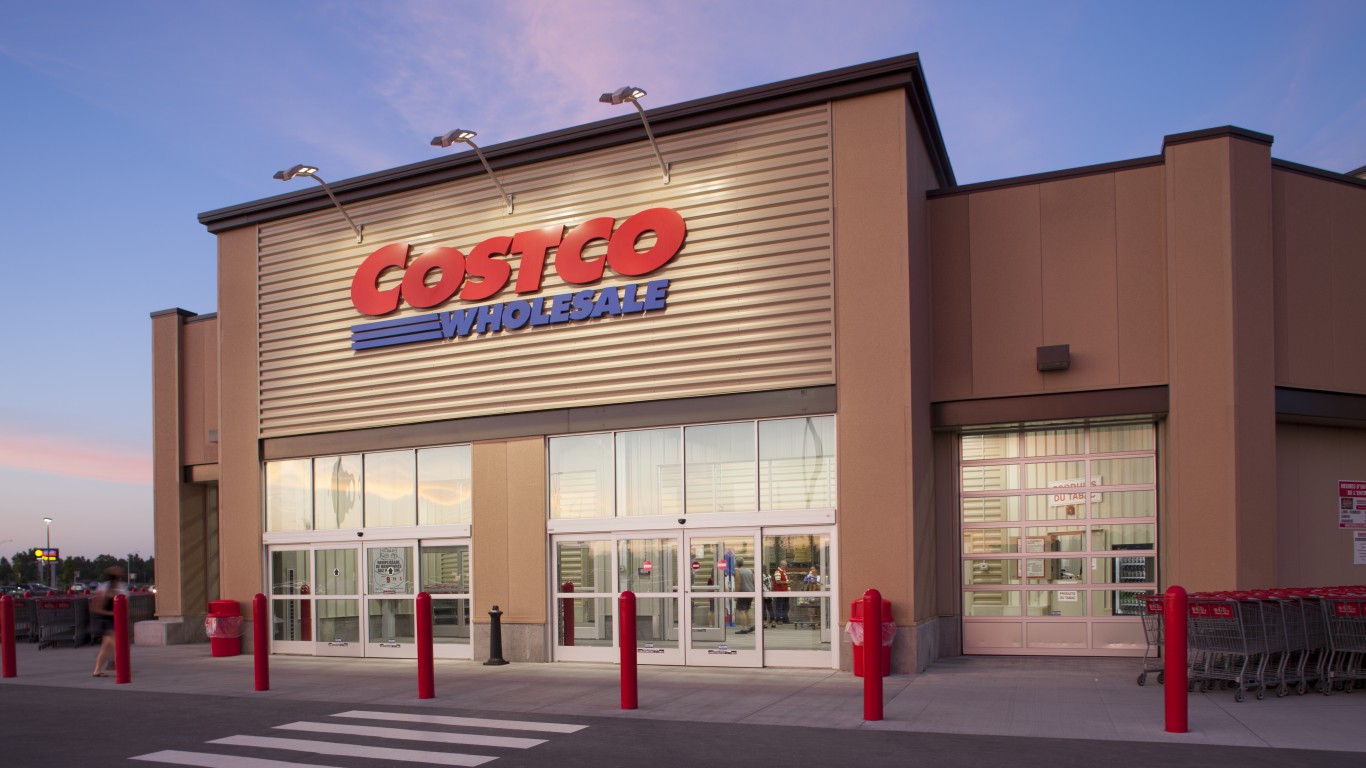
The burger wars just never seem to end, and the battle for fast-food dollars remains endless. The parent of Burger King and Tim Hortons is Restaurant Brands International Inc. (NYSE: QSR), and the earnings report for the fourth quarter of 2016 has just put the shares of that parent at all-time highs. It currently looks as though the combined operations of Burger King and Tim Hortons are eating the lunch of McDonald’s Corp. (NYSE: MCD).
Comparing these companies is rather difficult. After all, Restaurant Brands is now based in Canada, and that means that there are more currency adjustments compared to U.S. companies. McDonald’s is already global, and the company has been refranchising while it has made changes to its menu items.
What may matter more than quarterly numbers when you take the 10,000 foot aerial view is to look at the annual changes to get a better long-term picture. Restaurant Brands’ total revenue of $4.145 billion in 2016 was just 2.3% higher than the $4.052 billion in 2015. The restaurant count increased by 4.5% at Tim Hortons and 4.9% at Burger King in 2016 versus 2015, while the systemwide sales grew by 5.2% at Tim Hortons and by 7.8% at Burger King on a constant currency basis. Tim Hortons comparable sales increased 2.5% and those at Burger King’s increased 2.3% in constant currency terms.
Restaurant Brands International reported that its net income for the common shareholders was $345.6 million in 2016, up massively from the $103.9 million in prior year. Put this in context of a per-share basis, and the earnings per share in 2016 rose to $1.45 from $0.50 in 2015.
Now take a look at the McDonald’s gains in 2016. Its global comparable sales increased 3.8%, and it had positive comparable sales across all segments, but the actual consolidated revenues decreased 3% (or flat in constant currencies) after the impact of refranchising. McDonald’s posted consolidated operating income gains of 8% (or 11% in constant currencies) and the company’s 2016 diluted earnings of $5.44 per share was up 13% from 2015 (or 16% in constant currencies).
Longer-term investors might not want to be bogged down by the quarterly metrics, but if you back everything else out then it was really the fourth quarter of 2016 that made the largest contribution to the growth. Restaurant Brands International’s fourth quarter revenue of $1.1114 billion was actually up just over 5% from the $1.057 billion in the fourth quarter of 2015. Its full earnings per share of $0.50 compares with $0.25 a year earlier, while adjusted earnings that are used by Wall Street rose over 37% to $0.44.
The corporate release suggested that the growth of total revenues for the year and fourth quarter were primarily due to systemwide sales growth at both Tim Hortons and Burger King. What kept the numbers lower on the surface was an unfavorable foreign exchange on the currency. Daniel Schwartz, chief executive officer of Restaurant Brands International, said:
We are pleased to report another year of solid results, with strong financial performance in the fourth quarter. Our continued focus on guest satisfaction and value creation for all of our stakeholders has resulted in accelerated restaurant development and continued system-wide sales growth at both of our iconic brands, Tim Hortons and Burger King. We are excited about our progress this year and are committed to building on these results to achieve long-term sustainable growth.
It may seem hard to compare Burger King to McDonald’s while these companies are looking less and less alike. Still, there are some differences to note. McDonald’s President and Chief Executive Officer Steve Easterbrook said of its earnings back on January 23:
Throughout 2016, we worked diligently to lay the groundwork for our long-term future. We focused on driving changes in our menu, restaurants and technology to deliver an enhanced McDonald’s experience for our customers around the world. We applied the necessary rigor and discipline to strengthen the Company and our financial performance. Our efforts yielded a more streamlined and focused organization that generated solid fourth quarter and full year results, including our strongest annual global comparable sales growth since 2011 along with record franchisee cash flows in many of our major markets. I am confident that we’re on the right path as we pursue our goal of being recognized by our customers as the modern, progressive burger company.
So far it seems as though Restaurant Brands is winning in 2017 over McDonald’s for shareholders, hence eating its lunch. The S&P 500 was up 3.5% and McDonald’s shares were up 3.4% year-to-date. With a post-earnings gain of more than 2.5% to $52.21, Restaurant Brands shares were last seen trading up 9.5% so far in 2017.
Size may matter here, at least when it comes to being harder to grow a much larger company versus a smaller company. Restaurant Brands has a $24 billion market cap with more than $24 billion in system-wide sales and over 20,000 restaurants spread out in more than 100 countries and U.S. territories. McDonald’s is the world’s largest public fast food player, with a $104 billion market value and almost $25 billion in revenues with over 36,000 locations in over 100 countries. About 85% of McDonald’s stores are franchised.
Take Charge of Your Retirement In Just A Few Minutes (Sponsor)
Retirement planning doesn’t have to feel overwhelming. The key is finding expert guidance—and SmartAsset’s simple quiz makes it easier than ever for you to connect with a vetted financial advisor.
Here’s how it works:
- Answer a Few Simple Questions. Tell us a bit about your goals and preferences—it only takes a few minutes!
- Get Matched with Vetted Advisors Our smart tool matches you with up to three pre-screened, vetted advisors who serve your area and are held to a fiduciary standard to act in your best interests. Click here to begin
- Choose Your Fit Review their profiles, schedule an introductory call (or meet in person), and select the advisor who feel is right for you.
Why wait? Start building the retirement you’ve always dreamed of. Click here to get started today!
Thank you for reading! Have some feedback for us?
Contact the 24/7 Wall St. editorial team.


